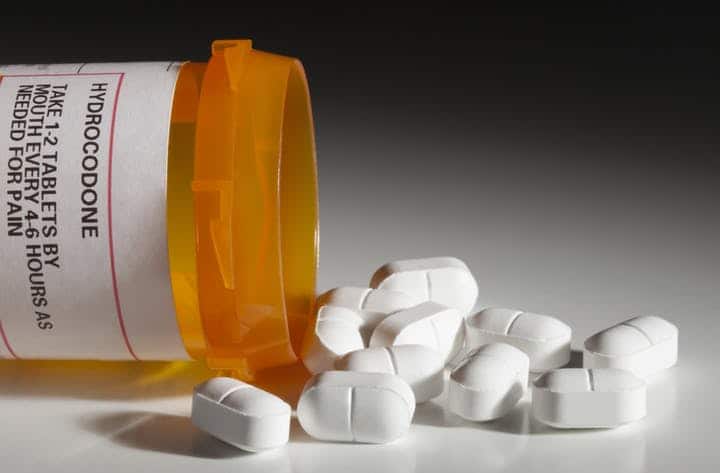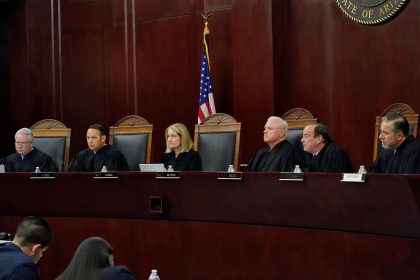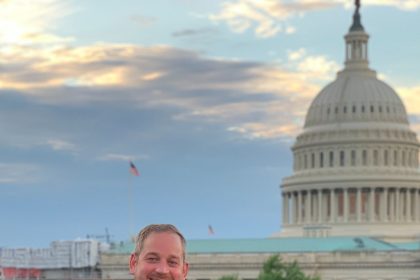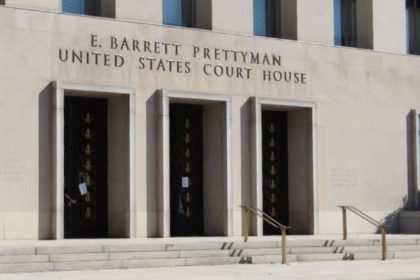Doctor Zero, How a Single Doctor Became His Own Opioid Crisis
Part III: Peace With Honor

Opioids have overwhelmed rural Illinois. Desperate, the cops in Ronald Reagan’s hometown have stopped arresting people and started getting them help. In an exclusive series, The Well News looks at “Safe Passage,” a program that radically rethinks America’s War on Drugs. Read Part I: The Town That Raised Reagan Wants Out of the War on Drugs, Part II: A Failed State, How Illinois’ Opioid Crisis Collided With a Political Crisis, and Part IV: ‘The Other Side of Me,’ How One Woman’s Redemption Offers Hope to Countless Others.
Sterling, Ill. — Most epidemics start with a patient zero. Here in northwest Illinois, the opioid epidemic features a doctor zero.
About 10 miles west of Dixon, up Route 2 and following the Rock River, under the shadow cast by the husk of the Northwestern Steel & Wire plant, sits a grand, blood red-brick Victorian mansion where Dr. Richard H. Ng ran one of two pain clinics in rural Illinois. (I know the building well: I grew up in Sterling and took my homecoming date to that building, when it was, briefly, an Italian restaurant.)
Ng had been a general practitioner in the area for years. But after he lost $1 million in a 2007 divorce decree, he rebooted.
Under the banner of the Sauk Medical Clinic, Ng stopped taking insurance and marketed himself as a pain specialist. According to federal charging documents, it was a cash-and-carry business: Ng would see as many patients as he could — scheduling multiple appointments in 15-minute slots — writing prescriptions and handing them to his new wife, who would demand payment on the spot. No money, no prescription. Over the course of the next three-plus years, everyone who came to his clinic with money obtained a prescription, Ng admitted to authorities.
It didn’t do to challenge Dr. Ng. Pharmacists who questioned his prescribing habits were threatened with litigation. According to court records, one man checked himself out of a rehab clinic in Freeport, Illinois, and walked half of the 35 miles to Sterling to keep his appointment with Ng before a relative picked him up. When the man’s wife worried aloud about the man’s habit, Ng told the man, “Better keep her on a leash because if she keeps calling I’ll stop seeing you,” court papers state.
‘The Real Crisis’
Not everyone who came to Ng got hooked and some patients came to Ng already addicted to opioids. But the damage he did is nearly incalculable. By the time authorities raided his offices in 2011, thousands had passed through his door. At least three people died from overdoses of drugs Ng gave them, court papers state.
In 2017, Ng pleaded guilty to fraud and income tax evasion and was sentenced to seven-and-a-half years in prison. After months of delays — claiming ill health — he finally reported to prison late last year and is currently serving his sentence in a federal prison hospital in Rochester, Minnesota.
Neither Ng nor his lawyer could be reached for comment. But Ng has written a book, “The Pain Doctor’s Dilemma,” in which he says that “the real public health crisis” stems from the “blame for the so-called crisis of opioid overdose” falling on “the prescribing doctors.”
“The truth is: people with addictive behaviors will and can find what they want anywhere and continue to exacerbate the ‘war on drugs,’” Ng writes, “while millions of legitimate patients with chronic pain continue to suffer with compromised functionality, poor quality of life and mental health, and decreased productivity in our American society.”
An open question remains: What of the drug companies selling their stuff at such a brisk pace in such a small town? Elsewhere, in Arizona, federal authorities have indicted Insys Therapeutics founder John Kapoor on charges he and his company bribed doctors to dole out fentanyl, an especially lethal opioid. (His company’s former CEO, Michael L. Babich, pleaded guilty to bribery charges in late December.) Law enforcement sources here in Illinois declined to comment when I asked them if any criminal investigations are pending.
It may fall to the civil lawyers to sort this out: One pharmaceutical company, Allergan, estimated in its 2016 annual report to the Securities and Exchange Commission that it had been named as a defendant in about 290 opioid civil cases. I have reached out to PhRMA, the drug companies’ trade association, for comment; they haven’t replied.
Ng’s Sterling clinic soon became a tattoo parlor. Now it’s a second-hand shop.
‘They Let Him Slide’
Two of Ng’s patients were sisters Kristi and Keri Stauffer, who grew up in nearby Dixon. Kristi died of an overdose in 2008, at 31; Keri — one of those witnesses who was supposed to testify against Linda Hoggard in the drug-induced homicide trial — died of an overdose in 2016, at 34 (her boyfriend, Chad Bock, another Ng patient-cum-Hoggard-witness, died of an overdose a week before Keri).
Each woman left two young children behind. The kids are in foster care, living with an aunt, Keri’s and Kristi’s father, Tim Stauffer, tells me.
“They let him slide,” Stauffer says of local authorities’ attitudes toward Ng. “They let him slide until people died.”
Stauffer and I speak by phone, while I sit in a rented car, outside my parents’ home in Sterling, in between interviews. Stauffer takes long pauses between sentences and he talks as though his tongue is heavy. I ask him how he copes with his grief. He mentions antidepressants. The line is silent for a moment, and then he says: “Unfortunately, I’m on opioids myself. I take Vicodin. I’m aware of what all these pills can do. I’m trying to get a medical marijuana card because I know it’ll help.”
‘Dry Up Or Die Out’
Ng’s indictment was a deliverance in one way, but it was also a case study in the futility of arresting your way out of the war on drugs. In the days after federal authorities raided Ng’s clinics, some 200 people showed up at the doors of the Whiteside County Public Health Department, the department’s CEO and Administrator Beth Fiorini tells me. (Interest declared: my mother sits on the board of public health. Interest disowned: Mom didn’t know I was interviewing Fiorini, I didn’t know Mom was on the board until after I booked the appointment, and Fiorini didn’t know about the connection until the interview was underway.)
Fiorini is a heavy woman, with frizzy, gray-to-white hair and a voice that rings out. Her accent is a little closer to a Chicagoan’s (flat a’s and a staccato tempo) than the slower, loping local variety (try adding a few rounded o’s to “Nope” and really aspirate on the p, and you’ll get close.) She sits at her desk in a brightly lit office crammed with white binders of statistics and reports.
The health department is headquartered in the town of Rock Falls, Sterling’s “Twin City,” just across the Avenue G bridge from Ng’s old pain clinic. After Ng was shut down, the Rock Falls clinic became a kind of MASH unit in the area’s opioid crisis. Fiorini hired two doctors and immediately began to work with Ng’s former patients to taper their drugs. It did not go over well.
“I remember this 80-something-year-old woman,” Fiorini says. “She’s crying at me: ‘I trusted my doctor. Now what am I going to do?’”
It took a year to triage patients from the Ng crisis, Fiorini says, acknowledging, ruefully, that most of his former patients probably skipped the clinic altogether and went straight to heroin. There are some 50 people right now in medicine-assisted drug treatment programs at the public health clinic, taking either Suboxone, an opioid-based lozenge designed to help curb withdrawal, or Vivitrol, a non-opioid based monthly injection, also designed to help with withdrawal.
The rest?
“We basically did what we could do,” Fiorini says.
Fiorini is about a year from retirement, but she sees the struggle here in generational terms. “If we can stop [prescriptions] now, in 20 years, it’ll get better,” she says. “Now, you’ve got to let the old druggies dry up, or die out.”
—
Part I: The Town That Raised Reagan Wants Out of the War on Drugs
Part II: A Failed State, How Illinois’ Opioid Crisis Collided With a Political Crisis
Part IV: ‘The Other Side of Me,’ How One Woman’s Redemption Offers Hope to Countless Others
—
Bill Myers lives and works in Washington, D.C. Email him at [email protected]. He tweets from @billcaphill.

























